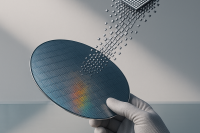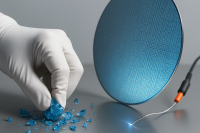From Weight Loss to Heart Health: New Era in Obesity Therapeutics
Published Nov 16, 2025
Novo Nordisk on Nov. 6, 2025 reported Phase III REDEFINE‐1 data showing CagriSema (cagrilintide+semaglutide) over 68 weeks reduced systolic blood pressure by 10.9 mm Hg versus 8.8 mm Hg for semaglutide alone and 2.1 mm Hg for placebo, and cut hs‐CRP by 68.9% versus 55.4% and 16%; Novo aims to file for approval in early 2026. REDEFINE‐2 showed 15.7% weight loss in people with type 2 diabetes—below ~22–24% seen in nondiabetic arms—prompting investor concern. Retatrutide’s highest dose delivered 24.2% mean weight loss at 48 weeks and is in Phase 3. Regulators are pressing for cardiovascular outcome trials (REDEFINE‐3 is in progress), shifting benchmarks from weight loss alone to hard CV and inflammatory outcomes; near‐term catalysts include an FDA decision on oral semaglutide (year‐end 2025) and retatrutide Phase‐3 readouts (late 2025/early 2026).
U.S. Mandates AI Governance and Procurement Reforms via M-25-21, M-25-22
Published Nov 16, 2025
Two federal memoranda—OMB M-25-21 and M-25-22—redefine U.S. executive-branch AI governance and procurement. M-25-21 requires agencies and independent regulators to remove barriers to AI adoption, maximize reuse of federal code, create internal AI governance boards, join an interagency CAIO Council, designate a Chief AI Officer within 60 days, and apply enhanced oversight to “high-impact” AI. M-25-22 tightens acquisition: procurement documents issued after October 1, 2025 must assess “high-impact” status upfront and include testing, oversight, interoperability and data-rights terms; agencies have 270 days to update acquisition policies and GSA will issue templates in 100–200 days. These directives force pre-validation of AI for rights- and safety-affecting uses, shift compliance burdens onto agencies and vendors, and impose an aggressive implementation timeline.
IBM's Nighthawk and Loon Fast-Track Quantum Advantage by 2026
Published Nov 16, 2025
On 2025-11-12 IBM announced two quantum processors—Nighthawk (120-qubit, 218 tunable couplers, ~30% more circuit complexity than Heron) and experimental Loon (long‐range couplers, multi-layer routing, reset capabilities)—and set targets to demonstrate quantum advantage by end‐2026 and fault‐tolerant quantum computing by 2029. Nighthawk aims to run 5,000 two‐qubit gates by end‐2025, 7,500 in 2026 and 10,000 in 2027; qLDPC decoding latency has dropped below 480 ns (≈10× faster), and migration to 300 mm wafer fabrication at Albany NanoTech doubled R&D speed and increased chip complexity tenfold. These coordinated hardware, fabrication and decoding gains tighten timelines for demonstrable advantage and scalable QEC, with direct implications for customer roadmaps, developer priorities and investor decisions; near‐term milestones to watch are Nighthawk public deployments in Q4 2025, benchmark results in 2026, and scaled QEC demos through 2027–2029.
IBM's Nighthawk and Loon Propel Quantum Advantage Toward Fault Tolerance
Published Nov 16, 2025
At its Quantum Developer Conference on 2025-11-12, IBM unveiled hardware, software and fabrication advances: Nighthawk (120 qubits, 218 tunable couplers, ~30% more circuit complexity vs Heron) aiming for circuits of 5,000 two‐qubit gates by end‐2025, 7,500 by end‐2026 and 10,000 in 2027; and Loon, an experimental chip with long‐range couplers, routing layers and qubit‐reset gadgets aligned to IBM’s fault‐tolerance roadmap for 2029. IBM also reported a qLDPC-based classical decoder performing syndrome decoding in under 480 ns (one year early), introduced a C/C++ API for Qiskit that can cut error‐mitigation costs by >100×, and moved to 300 mm Albany NanoTech wafers to double R&D speed and raise chip complexity tenfold. Expect public Nighthawk access late‐2025/early‐2026, community-verified advantage checks in 2026, and logical‐qubit demonstrations through 2027–2029.
EU AI Act Poised for Delay Amid US Pressure, Industry Pushback
Published Nov 16, 2025
On 2025-11-07 reporting shows the European Commission is weighing proposals to pause enforcement of certain “high-risk” provisions of the EU AI Act—enacted 1 August 2024—and introduce an expected one-year grace period so obligations would begin after August 2027; exemptions and phased-in transparency and registration rules are also under discussion following pressure from U.S. trade officials and large AI vendors (Meta, Google, OpenAI). This shift matters because it delays compliance costs and alters risk-management timelines for companies, affects investment and operational planning, and complicates international regulatory alignment as U.S. states (notably California’s SB 53, signed 2025-09-29) advance safety and transparency rules. Immediate milestones to watch: the Digital Omnibus text (mid–late November 2025) and regulatory guidance on “high-risk” definitions (late 2025).
Momentum Builds for Memory-Safe Languages to Mitigate Critical Vulnerabilities
Published Nov 16, 2025
On 2025-06-27 CISA and the NSA issued joint guidance urging adoption of memory-safe programming languages (MSLs) such as Rust, Go, Java, Swift, C#, and Python to prevent memory errors like buffer overflows and use‐after‐free bugs; researchers cite that about 70–90% of high‐severity system vulnerabilities stem from memory‐safety lapses. Google has begun integrating Rust into Android’s connectivity and firmware stacks, and national‐security and critical‐infrastructure organizations plan to move flight control, cryptography, firmware and chipset drivers to MSLs within five years. The shift matters because it reduces systemic risk to customers and critical operations and will reshape audits, procurement and engineering roadmaps. Immediate actions recommended include defaulting new projects to MSLs, hardening and auditing C/C++ modules, investing in Rust/Go skills and improved CI (sanitizers, fuzzing, static analysis); track vendor roadmaps (late 2025–2026), measurable CVE reductions by mid‐2026, and wider deployments in 2026–2027.
In Vivo Gene Editing Goes Clinical: Funding, AI, and Delivery Breakthroughs
Published Nov 16, 2025
Biotech funding and deals in late 2025 highlight accelerating in vivo gene editing: Azalea Therapeutics, co‐founded by CRISPR pioneer Jennifer Doudna, closed an $82M Series A to develop a single‐dose dual‐vector in vivo CAR‐T for B‐cell malignancies and plans clinical trials within 12–18 months; Editas Medicine has formally shifted to a fully in vivo CRISPR focus after preclinical data showing ~40% editing of the HBG1/2 promoter in HSCs, ~20% fetal hemoglobin expression in humanized mice at one month, and efficient liver editing in non‐human primates, targeting human proof‐of‐concept by 2027 with runway into Q2 2027; AstraZeneca agreed to spend up to $555M with Algen for AI‐driven target discovery. These developments affect patient impact, market opportunity and partnership activity, but regulatory, safety (off‐target/immunogenicity), durability and manufacturing hurdles remain; near‐term milestones include IND/CTA filings in 2026 and clinical readouts in 2026–2027.
IBM’s Loon Chip Signals Rapid Path to Fault-Tolerant Quantum Computing
Published Nov 16, 2025
On 12 November 2025 IBM announced the experimental Loon chip, which uses a cellular‐systems‐derived error‐correction approach and aims to help deliver useful quantum computers by 2029; alongside it IBM unveiled Nighthawk, slated for external research access by end‐2025 and expected to outperform classical computers on some tasks by late‐2026. About a week earlier IBM showed a quantum error‐correction algorithm running on AMD FPGAs at speeds 10× faster than demanded by performance needs. These developments matter because Loon’s design and FPGA integration could lower logical error rates and reduce the physical‐qubit overhead, accelerating timelines and pressing software, algorithm and infrastructure readiness. Immediate milestones to watch are Nighthawk public benchmarks in late‐2025 and external quantum‐advantage demonstrations by late‐2026.
EU Considers Pausing AI Act Amid Big Tech and Trade Pressure
Published Nov 16, 2025
EU and U.S. moves this fall signal a potential softening of AI rules: the European Commission is reportedly weighing pausing parts of the AI Act—under pressure from U.S. officials and firms such as Meta and Alphabet—including a leaked Digital Omnibus draft that could exempt narrow/procedural uses from high‐risk registration and grant a one‐year grace period for some obligations beginning after August 2027; the AI Act has been in force since August 2024 with key high‐risk duties slated from August 2026. In the U.S., the White House’s July 2025 AI Action Plan urges discouraging state AI laws while a proposed 10‐year House moratorium was removed by the Senate on 2025‐07‐01. These shifts matter for product launches, compliance costs, competitive advantage, and regulatory certainty; the final Omnibus on Nov 19, 2025 and state/federal moves in early 2026 are the next milestones to watch.
1 ms Superconducting Qubit: Princeton's Tantalum Breakthrough Accelerates Fault-Tolerant Quantum Computing
Published Nov 16, 2025
On November 5, 2025, a Princeton University team led by Andrew Houck, Nathalie de Leon and Robert Cava reported in Nature a superconducting qubit made from tantalum on high‐purity silicon with coherence exceeding 1 ms—about three times longer than prior lab best (0.3–0.4 ms) and roughly 15× higher than many current processors. Longer coherence reduces error‐correction overhead and allows more operations before errors, improving prospects for fault tolerance; related devices showed T1 up to 1.68 ms, Q ≈ 1.5×10^7 (peaks 2.5×10^7) and single‐qubit fidelities of 99.994% (MIT reported 99.998%). Princeton projects that integrating this design into processors like Willow could yield ~1,000× performance gains. Immediate outlook: raise two‐qubit fidelities (target >99.9%), demonstrate logical‐qubit break‐even in 2026, and standardize tantalum‐on‐silicon fabrication in early 2026.








